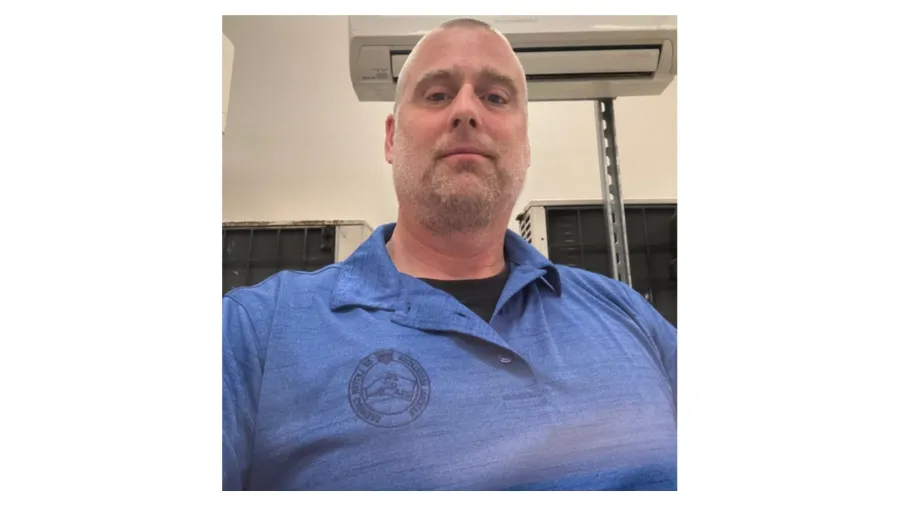John Graham New President of NALC 92; Union Wins Over $1.1 Million in Grievance

Portland Letter Carrier John Graham has stepped into the role of President of National Association of Letter Carriers Branch 92, following the recent departure of longtime President Mark Seitz, who has taken a job at Portsmouth Naval Shipyard. Graham has worked for the postal service since 2004 and has served as Vice President for roughly eight years prior to becoming President.
Graham says he is “relaxing into” his new role and his main priorities will be training more stewards and developing new leaders in the ranks.
“I don’t want to do this forever,” he said.
He always advises his stewards to thoroughly read the contract as well as manuals on how to be an effective steward.
“Know your job better than your supervisor,” said Graham. “Anytime you can spit language back to a supervisor as to why they’re wrong or why they shouldn’t be making the decision they’re making makes you a powerful steward.”
One important part of the job is organizing new members. The postal service is an open shop, which means that workers can choose to opt out of joining or financially support the union that represents them. But NALC has been incredibly effective at recruiting new employees to join. Out of 204 carriers in the Portland office, there is only one employee who is not a member of the union. Statewide, less than one percent of the 648 carriers in 34 post offices represented by Branch 92 have not joined the union.
Every Friday, Graham holds an organizing meeting with new carriers from Maine, New Hampshire and Vermont. He says new employees come in with all kinds of pre-conceived notions about unions. He makes it very clear to the workers that joining NALC is optional, but when he’s finished his presentation the vast majority of them sign up.
“You have people who think it’s Jimmy Hoffa’s way and then you have people who have zero union experience and have a negative outlook on unions. Every Friday there’s always someone who says ‘You’ve got a lot of work to do to change my mind. Usually they sign up at the end of class,” said Graham. “Every once in a while I’ll have someone who doesn’t sign up and they’re usually from Vermont.”
These days, Graham says the carriers have been facing a lot of pushback from new management over some rights and protections they have won in recent years.
“We have a new district manager coming in and a new postmaster coming saying they’ve never seen anything like this,” he said.
NALC 92 Wins More than $1.1 Million Grievance
Recently, an arbitrator awarded NALC 92 a 400 percent monetary remedy against the Portland Post Office for working part-time letter carriers more than 11.5 hours in a day in violation of the union’s National Agreement. The remedy roughly translates to more than $1.1 million, meaning some members will be receiving up to $80,000 for working far beyond the threshold.
In its defense, USPS management argued that the carriers often work the extra hours voluntarily “without management’s knowledge.” But arbitrator James R. Collins swiftly disposed of that argument, pointing out that “it is undisputed that management has regularly worked” part-time employees beyond the limit since 2013 in response to “a consistent pattern of staffing issues.” The initial monetary remedy for these violations was 50 percent, but they rose incrementally over the years to 400 percent after the USPS continued to violate the contract.
After winning a separate grievance over management directing part-time workers over the 12-hour daily limit, the union now has language stating that a carrier can refuse to go back out after twelve hours without being disciplined or fired. However, Graham said management has continued to work part-time carriers as long as 16 hours a day.
“They are still directing carriers or allowing carriers to work over 11.5,” said Graham. “That means for every hour [11.5 hours] they’re paying a carrier six hours to do an hour’s worth of work. Just stop doing it.”
He said it’s likely going to be another battle just to get the agency to pay out the new settlement.
“When we won the 11.5-hour grievance that was for $130,000 to 140,000, they didn’t interpret it that way and we had to go back to the arbitrator who said, ‘you see the way it’s written? That’s what I meant. Stop doing it.”
National Bargaining & the Two-Tier System
Meanwhile, national union leaders have been in negotiations with the agency since February, 2023. NALC’s current contract expired a year ago. Arbitrators have been selected, so it appears that the contract will be decided in binding arbitration, since it’s illegal for letter carriers and other postal workers to strike.
A key demand of the letter carriers is for cost-of-living increases and to do away with a discriminatory two-tier system that classifies new hires as City Carrier Assistants (CCAs), who start $16,000 less than the pre-2013 pay scale and do not receive the benefits of career employees for up to two years. It now takes more than eight years for new hires just to reach the starting wages of the pre-2013 pay scale. Although the top pay is the same, it takes 14 years to reach it.
CCAs can also be scheduled to work overtime on any day they are scheduled, making it impossible to know sometimes how long they are going to work before they clock in for the day.
The two-tier system was imposed by an arbitrator in the aftermath of the 2008 recession and letter carriers have long blamed it for chronic staffing challenges. In 2023, the staffing shortage had gotten so dire at that the Portland office that USPS converted part-time and non-permanent “non-career” workers into career positions, giving them a boost in their hourly pay from $19.33 to $22 making them eligible for career pension contributions, better health insurance, 401k matches and more. Military veterans were also made eligible to have any vacation time earned in the service apply to their careers with the postal service.
Graham said that while staffing has improved in Portland, it’s probably easier to list the offices out of the 34 locations NALC 92 represents that are fully staffed than the ones that are short staffed.
“If we had never gotten that second pay scale I don’t think we’d have hiring problems,” said Graham.
